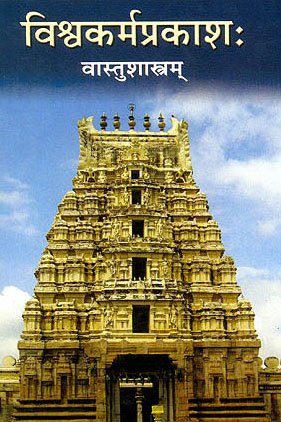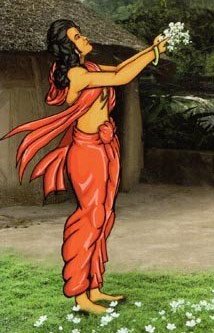Bhadraka, Bhadrakā: 17 definitions
Introduction:
Bhadraka means something in Hinduism, Sanskrit, Jainism, Prakrit. If you want to know the exact meaning, history, etymology or English translation of this term then check out the descriptions on this page. Add your comment or reference to a book if you want to contribute to this summary article.
In Hinduism
Ayurveda (science of life)
Source: Wisdom Library: Āyurveda and botanyBhadraka (भद्रक) is another name for Devadāru, which is a Sanskrit word referring to Cedrus deodara (Himalayan cedar), from the Pinaceae family. It is classified as a medicinal plant in the system of Āyurveda (science of Indian medicine) and is used throughout literature such as the Suśrutasaṃhita and the Carakasaṃhitā. The synonym was identified in the Rājanighaṇṭu (verses 12.28), which is a 13th century medicinal thesaurus.

Āyurveda (आयुर्वेद, ayurveda) is a branch of Indian science dealing with medicine, herbalism, taxology, anatomy, surgery, alchemy and related topics. Traditional practice of Āyurveda in ancient India dates back to at least the first millenium BC. Literature is commonly written in Sanskrit using various poetic metres.
Vastushastra (architecture)
Source: Wisdom Library: Vāstu-śāstra1) Bhadraka (भद्रक) refers to a type of temple (prāsāda) classified under the group named Lalita, according to Samarāṅgaṇasūtradhāra chapter 56. The Lalita group contains twenty-five out of a sixty-four total prāsādas (temples) classified under four groups in this chapter. The Samarāṅgaṇasūtradhāra is an 11th-century encyclopedia dealing with various topics from the Vāstuśāstra.
2) Bhadraka (भद्रक) refers to “engaged pillars”. It is a type of stambha (‘pillar’).

Vastushastra (वास्तुशास्त्र, vāstuśāstra) refers to the ancient Indian science (shastra) of architecture (vastu), dealing with topics such architecture, sculpture, town-building, fort building and various other constructions. Vastu also deals with the philosophy of the architectural relation with the cosmic universe.
Purana and Itihasa (epic history)
Source: archive.org: Puranic Encyclopedia1) Bhadraka (भद्रक).—A king belonging to the Aṅga dynasty. (Agni Purāṇa, Chapter 277).
2) Bhadraka (भद्रक).—A brahmin outcaste. This brahmin, who spent his whole life in committing sins, by chance, took māgha bath for three days at Prayāga, and thus got himself sanctified.
2) King Vīrasena, who was then ruling the Avanti kingdom had earned ample sanctity by the performance of seventeen Aśvamedha yāgas. The Deaths of King Vīrasena and Bhadraka took place on one and the same day. Though Bhadraka was immoral in his life, he went to heaven along with Vīrasena after death as he had taken the māgha bath. (Padma Purāṇa, Uttarakhaṇḍa).
Source: Cologne Digital Sanskrit Dictionaries: The Purana Index1a) Bhadraka (भद्रक).—A son of Śibi.*
- * Matsya-purāṇa 48. 19.
1b) A kingdom after Bhadraka, son of Śibi.*
- * Matsya-purāṇa 48. 20.
Bhadraka (भद्रक) is a name mentioned in the Mahābhārata (cf. VI.47.9) and represents one of the many proper names used for people and places. Note: The Mahābhārata (mentioning Bhadraka) is a Sanskrit epic poem consisting of 100,000 ślokas (metrical verses) and is over 2000 years old.

The Purana (पुराण, purāṇas) refers to Sanskrit literature preserving ancient India’s vast cultural history, including historical legends, religious ceremonies, various arts and sciences. The eighteen mahapuranas total over 400,000 shlokas (metrical couplets) and date to at least several centuries BCE.
Kavya (poetry)
Source: Wisdom Library: KathāsaritsāgaraBhadrakā (भद्रका), daughter of Devala, is one of the twelve female friends of Mahallikā: daughter of Prahlāda, according to the Kathāsaritsāgara, chapter 45. Accordingly, as Mahallikā said to Sūryaprabha: “... my female friends are not only two, but twelve in number, and my father’s brother carried them off from Indra’s heaven... And the third is Kālindī, the fourth Bhadrakā, and the fifth is the noble Kamalā with beautiful eyes. These three are the daughters of the great hermit Devala... They [eg., Bhadrakā] are all heavenly nymphs, born from Apsarases, and when I was married they were taken to the first underworld, and I must bestow them on you, in order that I may be always with them”.
The story of Bhadrakā and Mahallikā was narrated by the Vidyādhara king Vajraprabha to prince Naravāhanadatta in order to relate how “Sūryaprabha, being a man, obtain of old time the sovereignty over the Vidyādharas”.
The Kathāsaritsāgara (‘ocean of streams of story’), mentioning Bhadrakā, is a famous Sanskrit epic story revolving around prince Naravāhanadatta and his quest to become the emperor of the vidyādharas (celestial beings). The work is said to have been an adaptation of Guṇāḍhya’s Bṛhatkathā consisting of 100,000 verses, which in turn is part of a larger work containing 700,000 verses.

Kavya (काव्य, kavya) refers to Sanskrit poetry, a popular ancient Indian tradition of literature. There have been many Sanskrit poets over the ages, hailing from ancient India and beyond. This topic includes mahakavya, or ‘epic poetry’ and natya, or ‘dramatic poetry’.
In Jainism
General definition (in Jainism)
Source: Wisdom Library: JainismBhadraka (भद्रक) refers to a class of yakṣa deities according to Digambara while the Śvetāmbara tradition does not reccognize this class. The yakṣas refer to a category of vyantaras gods which represents one of the four classes of celestial beings (devas). The assigned color of yakṣas is black and their caitya-vṛkṣa (sacred tree) is the “banyan tree” (vaṭa).
The deities such as the Bhadrakas are defined in ancient Jain cosmological texts such as the Saṃgrahaṇīratna in the Śvetāmbara tradition or the Tiloyapaṇṇati by Yativṛṣabha (5th century) in the Digambara tradition.

Jainism is an Indian religion of Dharma whose doctrine revolves around harmlessness (ahimsa) towards every living being. The two major branches (Digambara and Svetambara) of Jainism stimulate self-control (or, shramana, ‘self-reliance’) and spiritual development through a path of peace for the soul to progess to the ultimate goal.
Languages of India and abroad
Sanskrit dictionary
Source: DDSA: The practical Sanskrit-English dictionaryBhadraka (भद्रक).—a. (-drikā f.)
1) Good, auspicious.
2) Handsome, beautiful.
3) Virtuous (sajjana); विकर्मक्रियया नित्यं बाधन्ते भद्रिकाः प्रजाः (vikarmakriyayā nityaṃ bādhante bhadrikāḥ prajāḥ) Manusmṛti 9.226.
-kaḥ 1 The Devadāru tree.
2) A kind of bean; शालिवाहसहस्रं च द्वं शते भद्रकांस्तथा (śālivāhasahasraṃ ca dvaṃ śate bhadrakāṃstathā) Rām.2.32.2.
-kam 1 Name of a metre of 22 syllables; भ्रौ नरनारनावथ गुरुर्दिगर्कविरसं हि भद्रकमिदम् (bhrau naranāranāvatha gururdigarkavirasaṃ hi bhadrakamidam) V. Ratna.
2) Cyperus Rotunda (Mar. nāgaramothā).
3) A particular posture in sitting.
4) A particular mystic sign.
5) A harem.
Source: Cologne Digital Sanskrit Dictionaries: Edgerton Buddhist Hybrid Sanskrit DictionaryBhadraka (भद्रक).—(1) adj. with kalpa, = bhadrakalpa, q.v.; (2) = Bhadrika (2), one of the bhadravargīya monks: Mahāvastu iii.328.20. (As adj. = bhadra, found in Sanskrit; probably with endearing diminutive flavor Divyāvadāna 38.15, 23, 30.)
Source: Cologne Digital Sanskrit Dictionaries: Shabda-Sagara Sanskrit-English DictionaryBhadraka (भद्रक).—mfn.
(-kaḥ-kā-kaṃ) 1. Beautiful, pleasing agreeable. 2. Respectable, worthy, estimable. 3. Lucky, fortunate. n.
(-kaṃ) A sort of grass, (Cyperus pertenuis.) m.
(-kaḥ) A sort of pine, (Pinus Devadaru.) E. kan added to the last.
Source: Cologne Digital Sanskrit Dictionaries: Benfey Sanskrit-English DictionaryBhadraka (भद्रक).—[bhadra + ka], adj., f. rikā. 1. Beautiful, agreeable. 2. Respectable, worthy, [Daśakumāracarita] in
Bhadraka (भद्रक).—[feminine] bhadrikā good; [masculine] [plural] [Name] of a people.
Source: Cologne Digital Sanskrit Dictionaries: Monier-Williams Sanskrit-English Dictionary1) Bhadraka (भद्रक):—[from bhand] mf(ikā)n. good, brave, [Manu-smṛti; Mahābhārata; Kathāsaritsāgara] (m. [vocative case] [plural] kāḥ in address, [Daśakumāra-carita])
2) [v.s. ...] fine, handsome, beautiful, [cf. Lexicographers, esp. such as amarasiṃha, halāyudha, hemacandra, etc.]
3) [v.s. ...] m. a kind of bean, [Rāmāyaṇa] ([Scholiast or Commentator])
4) [v.s. ...] Cyperus Pertenuis (?), [Saṃskārakaustubha]
5) [v.s. ...] Pinus Deodora, [cf. Lexicographers, esp. such as amarasiṃha, halāyudha, hemacandra, etc.]
6) [v.s. ...] ([plural]) Name of a people, [Rāmāyaṇa]
7) [v.s. ...] Name of a prince, [Bhāgavata-purāṇa]
8) [v.s. ...] [varia lectio] for bhadrika q.v.
9) Bhadrakā (भद्रका):—[from bhadraka > bhand] f. Name of a woman, [Kathāsaritsāgara]
10) Bhadraka (भद्रक):—[from bhand] n. Cyperus Rotundus, [cf. Lexicographers, esp. such as amarasiṃha, halāyudha, hemacandra, etc.]
11) [v.s. ...] a [particular] posture in sitting (= bhadrāsana), [Catalogue(s)]
12) [v.s. ...] a kind of metre, [Colebrooke]
13) [v.s. ...] a [particular] mystic sign, [Agni-purāṇa]
14) [v.s. ...] a harem, [Demetrius Galanos’s Lexiko: sanskritikes, anglikes, hellenikes]
Source: Cologne Digital Sanskrit Dictionaries: Yates Sanskrit-English DictionaryBhadraka (भद्रक):—[(kaḥ-kā-kaṃ) a.] Beautiful, pleasing, good, fortunate. m. A sort of pine. n. A sort of grass.
[Sanskrit to German]
Sanskrit, also spelled संस्कृतम् (saṃskṛtam), is an ancient language of India commonly seen as the grandmother of the Indo-European language family (even English!). Closely allied with Prakrit and Pali, Sanskrit is more exhaustive in both grammar and terms and has the most extensive collection of literature in the world, greatly surpassing its sister-languages Greek and Latin.
Kannada-English dictionary
Source: Alar: Kannada-English corpusBhadraka (ಭದ್ರಕ):—
1) [adjective] of good omen; boding well for the future; favorable; propitious; auspicious.
2) [adjective] having or characterised by, moral virtue; righteous; virtuous.
3) [adjective] very pleasing to the eye; beautiful.
--- OR ---
Bhadraka (ಭದ್ರಕ):—[noun] the large-sized, evergreen tree Cedrus libani of Coniferae family; Indian cedar.
Kannada is a Dravidian language (as opposed to the Indo-European language family) mainly spoken in the southwestern region of India.
See also (Relevant definitions)
Starts with (+17): Bhadrakaleshvara, Bhadrakali, Bhadrakalicintamani, Bhadrakalika, Bhadrakalikavaca, Bhadrakalimahatmya, Bhadrakalimantra, Bhadrakalimanu, Bhadrakalipancanga, Bhadrakalippattu, Bhadrakalipuja, Bhadrakalipujana, Bhadrakalipujavidhi, Bhadrakalipujayantra, Bhadrakalipurana, Bhadrakaliyantra, Bhadrakalpa, Bhadrakalpika, Bhadrakalpikasutra, Bhadrakalpiya.
Ends with: Anilabhadraka, Balabhadraka, Caturbhadraka, Grihabhadraka, Haribhadraka, Manabhadraka, Manibhadraka, Paaribhadraka, Panibhadraka, Parabhadraka, Paribhadraka, Prabhadraka, Pushpabhadraka, Rajabhadraka, Sabhadraka, Samantabhadraka, Sarvatobhadraka, Subhadraka, Tiktabhadraka, Virabhadraka.
Full-text (+20): Subhadraka, Tiktabhadraka, Balabhadraka, Rajabhadraka, Pushpabhadraka, Virabhadraka, Grihabhadraka, Bhadrika, Nikara, Vasumitra, Bhadrakastambha, Anushala, Manabhadraka, Manibhadraka, Sarvatobhadrika, Andraka, Samantabhadraka, Bhagabhadra, Sarvatobhadraka, Yaksha.
Relevant text
Search found 25 books and stories containing Bhadraka, Bhadrakā; (plurals include: Bhadrakas, Bhadrakās). You can also click to the full overview containing English textual excerpts. Below are direct links for the most relevant articles:
The Agni Purana (by N. Gangadharan)
Chapter 29 - Mode of worshipping Hari in the figure called Sarvatobhadra
Chapter 277 - The narration of the lineage of Aṅga (rājavaṃśa)
Chapter 30 - Mode of worship of different gods in specially drawn lotus figures
Manasara (English translation) (by Prasanna Kumar Acharya)
Chapter 24 - The six-storeyed buildings (ṣaṭtala or ṣaṣbhūmi)
Chapter 26 - The eight-storeyed buildings (aṣṭatala or aṣṭabhūmi)
Maha Prajnaparamita Sastra (by Gelongma Karma Migme Chödrön)
Appendix 3 - The usual light (prakṛtiprabhā) of the Buddha < [Chapter XIV - Emission of rays]
III.2: Subjective nature of the appearance of the Buddhas < [Part 4 - Being born into the family of the Bodhisattvas, etc.]
Guide to Tipitaka (by U Ko Lay)
(d) Salayatana Vagga Samyutta Pali < [Chapter VI - Samyutta Nikaya]
Puranic encyclopaedia (by Vettam Mani)
The Matsya Purana (critical study) (by Kushal Kalita)
Part 2.1l - The Anva Dynasty < [Chapter 3 - Historical aspects in the Matsyapurāṇa]